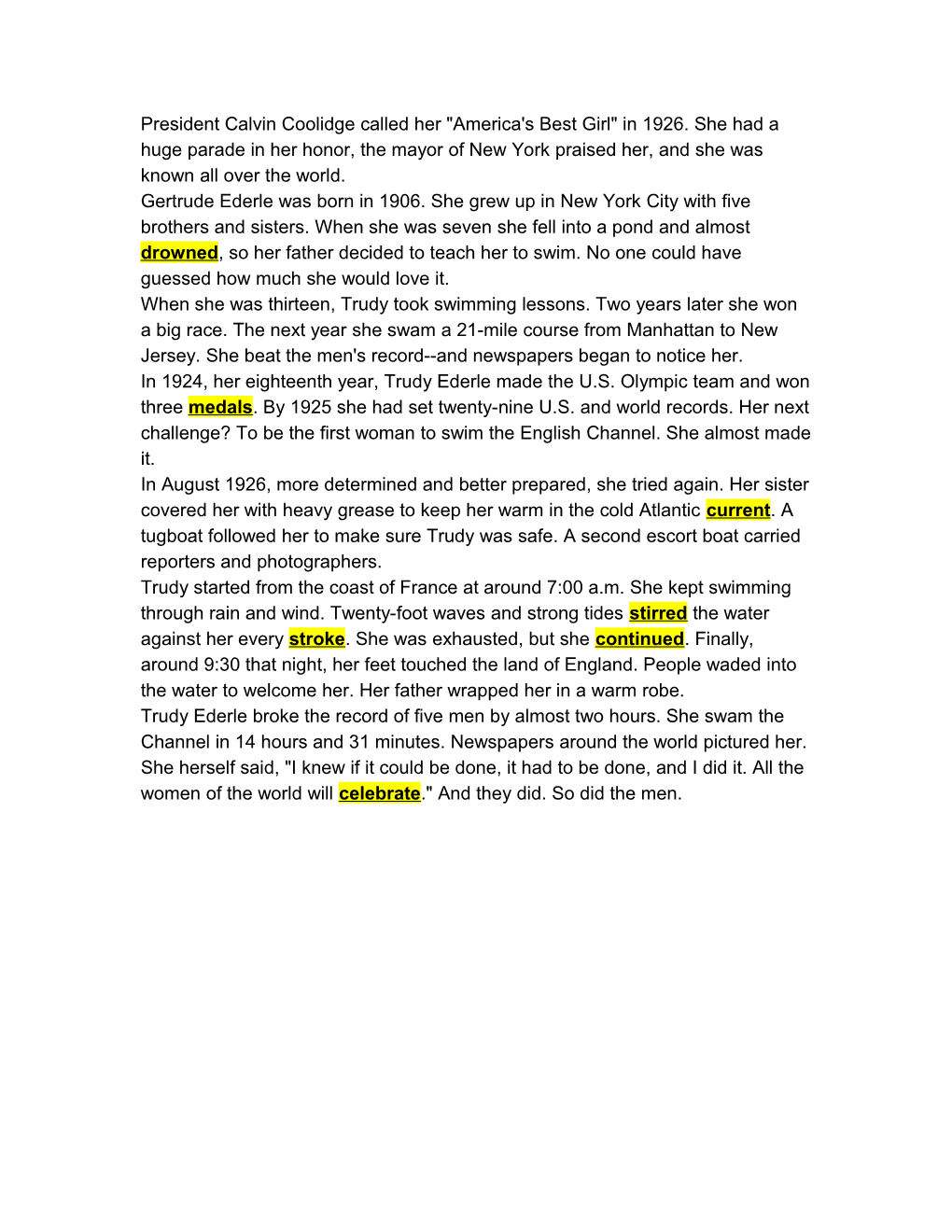President Calvin Coolidge called her "America's Best Girl" in 1926. She had a huge parade in her honor, the mayor of New York praised her, and she was known all over the world.
Gertrude Ederle was born in 1906. She grew up in New York City with five brothers and sisters. When she was seven she fell into a pond and almost drowned, so her father decided to teach her to swim. No one could have guessed how much she would love it.
When she was thirteen, Trudy took swimming lessons. Two years later she won a big race. The next year she swam a 21-mile course from Manhattan to New Jersey. She beat the men's record--and newspapers began to notice her.
In 1924, her eighteenth year, Trudy Ederle made the U.S. Olympic team and won three medals. By 1925 she had set twenty-nine U.S. and world records. Her next challenge? To be the first woman to swim the English Channel. She almost made it.
In August 1926, more determined and better prepared, she tried again. Her sister covered her with heavy grease to keep her warm in the cold Atlantic current. A tugboat followed her to make sure Trudy was safe. A second escort boat carried reporters and photographers.
Trudy started from the coast of France at around 7:00 a.m. She kept swimming through rain and wind. Twenty-foot waves and strong tides stirred the water against her every stroke. She was exhausted, but she continued. Finally, around 9:30 that night, her feet touched the land of England. People waded into the water to welcome her. Her father wrapped her in a warm robe.
Trudy Ederle broke the record of five men by almost two hours. She swam the Channel in 14 hours and 31 minutes. Newspapers around the world pictured her. She herself said, "I knew if it could be done, it had to be done, and I did it. All the women of the world will celebrate." And they did. So did the men.
President Calvin Coolidge Called Her America's Best Girl in 1926
